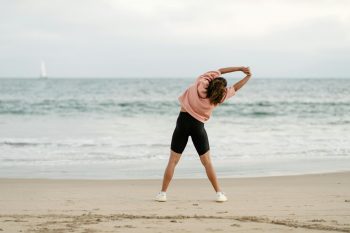Written by Shaneen Noble.
What is functional fitness?
The fitness industry has seen numerous trends over the years, each promising a range of health benefits. Workout programmes such as HIIT, body-weight training, weight-loss exercise, CrossFit, Pilates and weight lifting etc, all hold benefits such as improved bone health, growing muscle, endurance and optimal heart health.
Ultimately, though, the goal is to be as agile and fit for as long as possible into old age. Enter functional fitness, which incorporates certain movements into your workout routine that mimic daily life activities, with a reduced risk of injury.
ALSO SEE: Five days you should schedule with yourself every single month
Who can do it?
The good news is that anyone can do it, but it’s especially beneficial for people who don’t have a particularly extensive workout regime, those who have limited time, and older people who wish to maintain some sort of active lifestyle. It’s also supplementary so you don’t have to swap it out with any existing workout programme.

Pexels / Ketut Subiyanto
Exercises to focus on:
- Squats: targets quads; replicates picking up objects and sitting down
- Push-ups: targets pecs and shoulders; replicates getting up from the floor in case of a fall
- Step-ups: strengthens muscles to climb stairs
- Step-downs: improves balance and flexibility; for descending stairs
- Single-leg deadlift: practises hinging at the hip and picking up things
- Rows: targets the back and arms; similar movement to lifting items out of a car’s boot
Bottom line
There are many more movements to incorporate into your regimen – the key is to build strength, flexibility and mobility. It’s great for core strength and focuses on multiple muscle group simultaneously, so that you are free to enjoy life without being limited in movement. Overall improved quality of life is the ultimate aim.
ALSO SEE:
Feature Image: Pexels / FBYF Studio

